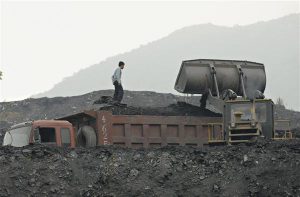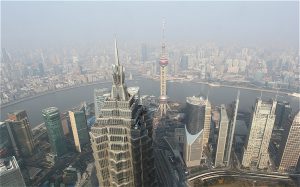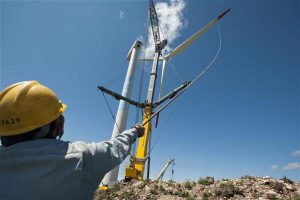China’s establishment of the Asian Infrastructure Investment Bank (AIIB) has intensified debate about whether a new generation of development banks, led by emerging countries, is needed to ensure that financing decisions adequately account for principles of environmentally sustainable growth. Far more important, however, is whether such principles underpin developing countries’ broader capital markets, which have become increasingly central to the international financial system.
The answer, as of now, seems to be yes. China and other major emerging economies appear committed to designing financial systems that serve the long-term imperatives of inclusive and sustainable development. But they cannot create a genuinely inclusive and sustainable global economy alone.
Policy-directed investment vehicles, which have grown in number and significance in recent years, are critical to this effort. While the AIIB and the forthcoming New Development Bank, operated by the BRICS countries, are the most visible internationally, they are only the tip of the iceberg. The world’s two largest development banks – the Brazilian Development Bank and the China Development Bank – together manage about US$1.5 trillion in assets.
Sovereign wealth funds – the assets of which have swelled from just over US$3 trillion in 2007 to more than US$7 trillion today – also have a significant influence on global asset markets. Likewise, monetary authorities have been playing an increasingly active role, with the major central banks’ balance sheets having expanded from about US$5.5 trillion in 2005 to US$13.9 trillion earlier this year.
But such figures, though large, pale in comparison with the US$305 trillion worth of financial assets held by commercial banks, institutional investors, and other private financial institutions and individuals. How these funds are deployed will determine the shape of tomorrow’s economies and the state of the environment on which they depend.
Recent reports commissioned by the United Nations Environment Program (UNEP) neatly summarise where we are with two key data points: While global investment in renewables increased by 17% last year, 116 of 140 countries registered a deterioration in their stock of natural capital. In other words, financial markets are responding to environment-related risks and opportunities, but far too slowly to halt, let alone reverse, the potentially catastrophic damage being wrought by human activity.
This must change. Finance needs to be directed more rapidly and decisively away from natural-resource-intensive and polluting investments and toward green opportunities. While greener economic and industrial policies are vital, they are inadequate; policy and market failures in the financial economy must be addressed as well.
The Organisation for Economic Cooperation and Development countries, despite being the source of modern history’s most devastating financial meltdown, have shown less appetite to advance sustainability as a design principle of their financial systems. (The Bank of England’s ongoing prudential review of climate-related risks to the financial sector is a notable exception.) This contrasts with the approach of some developing economies, which not only face more immediate environmental and social challenges, but also take a “developmental” view of the financial system’s role.
China’s Green Task Force
Consider China, where a task force created by the Peoples’ Bank of China has just unveiled 14 ambitious proposals to green the country’s financial system. The so-called “green finance task force” – co-convened by the PBOC’s Research Bureau and the UNEP Inquiry into Design Options for a Sustainable Financial System – initially comprised 40 ministers, regulators, academics and financial actors, supported by international experts. It was recently expanded to include more than 100 institutions, which are working together to create detailed execution plans for each proposal.
The proposals cover four broad areas.
• Specialised investment vehicles to support green investment, domestically and internationally.
• Fiscal and financial support, including interest subsidies for green loans, incentives for developing the green bond market, and better mechanisms for green firms to communicate their environmental performance in equity markets.
• New financial infrastructure, including carbon markets, a green ratings system, and a green investor network.
• Legal infrastructure, including clearer lender liability provisions, compulsory environmental liability insurance, and the disclosure of environmental information.
Green finance is at an early stage in China, just as it is in the rest of the world. Fortunately, according to UNEP’s two-year inquiry into policy options for greening financial and capital markets, the movement is gaining traction in emerging countries such as Brazil, Kenya and Indonesia, as well as developed economies like the UK.
China’s recent move marks the beginning of a new phase of its financial-market development, in which green-finance goals are central, rather than an add-on, to relevant initiatives. According to Pan Gongsheng, the PBOC’s deputy governor, green finance will be a “key element” of “the 13th Five-Year Plan for the reform and development of China’s financial sector.”
Tipping point?
The current shift toward green finance in developing countries can have a significant international impact. China’s efforts, in particular, could take the world to a tipping point, through their effects on the country’s growing global financial footprint.
And, indeed, international action – from knowledge sharing to the development of suitable standards and oversight – is vital to advance green finance. Fortunately, progress is being made here, too. UNEP’s work has helped to invigorate a vibrant informal network involving central banks and other rule-makers and market actors.
The major rating agency Standard & Poor’s is integrating climate risks into its sovereign-credit analysis. And the G20 recently asked the Financial Stability Board to consider the risks that a possible “carbon bubble” – caused by markets’ overvaluation of fossil-fuel companies’ oil, coal and gas reserves, owing to a failure to account for future limits on extraction and use – pose to the global financial system.
Progressive national leadership and international coalitions – together with more deeply engaged multilateral institutions – are needed to build a more inclusive green global financial system. Only such a system can effectively advance sustainable development.
This article first appeared on the website of Project Syndicate.







